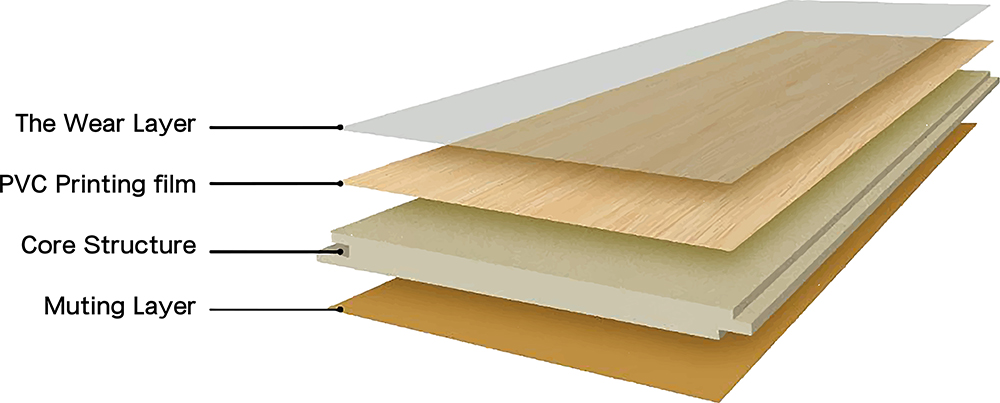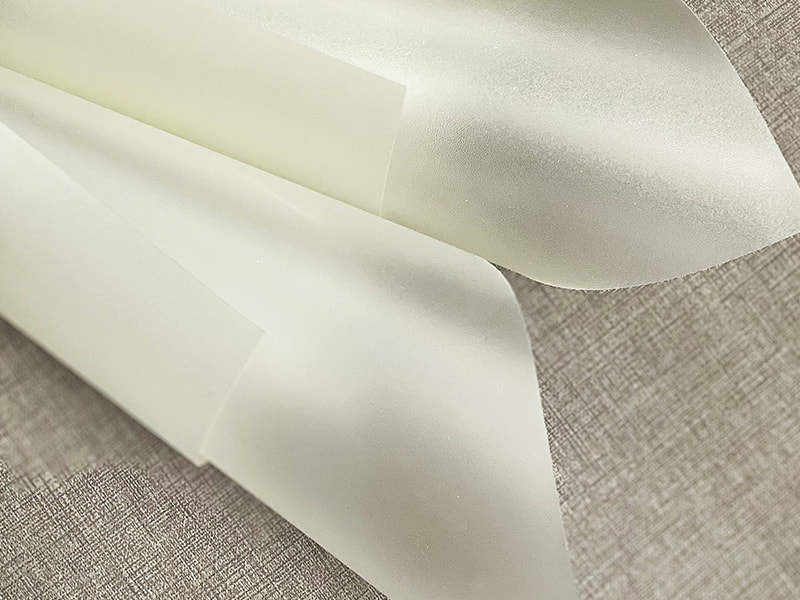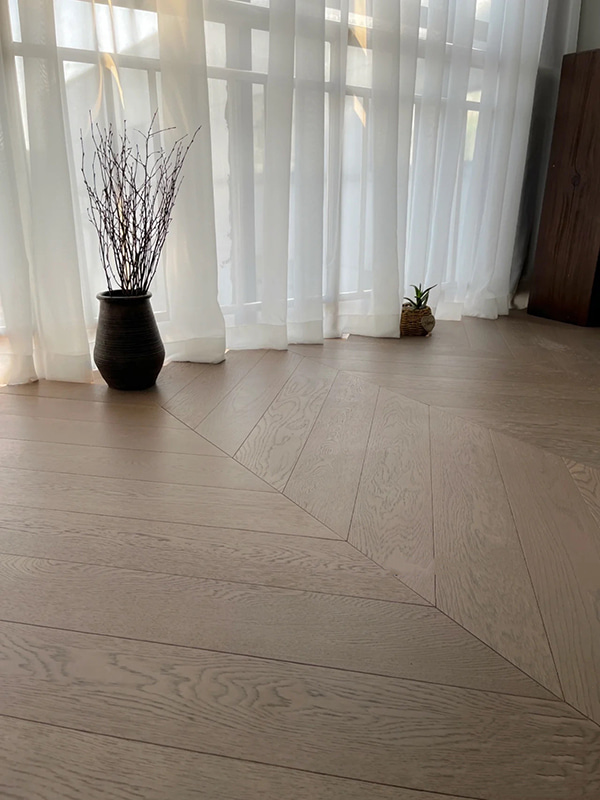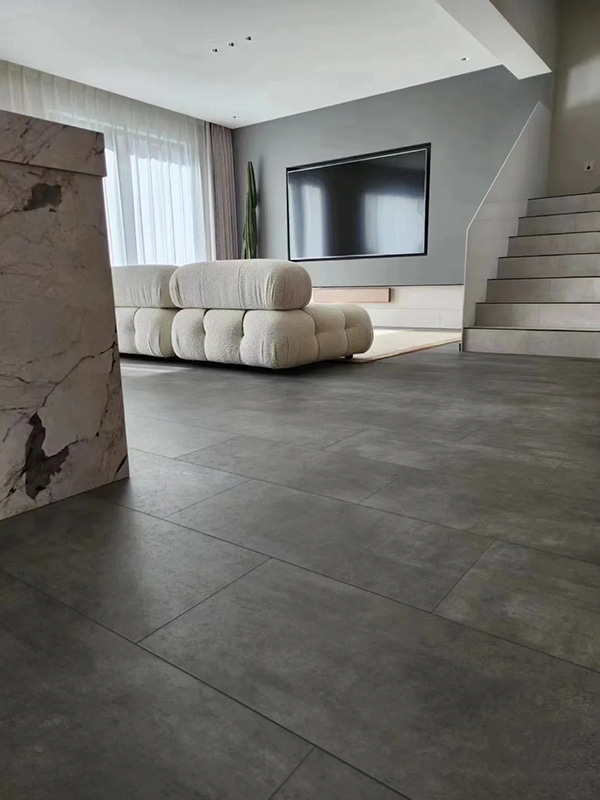-

+86-(0)573-87985868
-

+86-(0)573-89237968
-

-

NO.11 Hongqi Road, warp knitting industrial park of Haining City, Zhejiang Province, China
Web Menu
Product Search
Language
Exit Menu
News categories
Product categories
Wear Layer in Flooring: A Comprehensive Guide
- 1 I. Introduction: The Floor's "Invisible Armor"
- 2 II. What is a Wear Layer and Why is it Important?
- 3 IV. Depth Dive: Vinyl (LVP/LVT/SPC) Wear Layers
- 4 V. Depth Dive: Laminate Wear Layers
- 5 VI. Engineered Hardwood Wear Layers
- 6 VII. Wear Layer Thickness and Overall Durability: Going Beyond the Mil
- 7 VIII. Matching Wear Layer to Traffic Levels and Lifestyle
- 8 IX. Factors Affecting Wear Layer Performance
- 9 X. Wear Layer Warranties and Cost Considerations
- 10 XI. Maintenance and Care for Different Wear Layers
- 11 XII. Wear Layer vs. Other Flooring Layers
- 12 XIII. Choosing the Right Wear Layer: Your Final Checklist
- 13 XIV. Top Flooring Products with Excellent Wear Layers
- 14 XV. Common Wear Layer Problems and Solutions
- 15 XVI. So
I. Introduction: The Floor's "Invisible Armor"
When shopping for new flooring, you'll encounter countless terms: LVP, laminate, AC ratings, mil thickness, and more. But arguably, the single most important factor determining your floor's long-term beauty and longevity is something you can barely see: the wear layer.
The wear layer is the unsung hero of resilient and laminate flooring. While many buyers focus on the visual layer—the color and pattern—it's the wear layer that truly matters, acting as the floor's invisible armor against the daily abuse of foot traffic, pets, spills, and dragged furniture. Understanding the quality, thickness, and composition of this layer is the key to making an investment that lasts.
II. What is a Wear Layer and Why is it Important?
What is a Wear Layer?
The wear layer is the clear, top protective coating applied to many types of flooring, most commonly Luxury Vinyl Plank (LVP), Luxury Vinyl Tile (LVT), and laminate.
In a typical multi-layer floor structure, it sits directly above the image layer (the print or pattern that gives the floor its look) and is the first line of defense against the outside world.

It may look like this.
Why is the Wear Layer Important?
The wear layer performs three vital functions that determine the practical lifespan of your floor:
-
Abrasion Resistance: It defends the floor against scuffing and grinding caused by grit, dirt, and foot traffic. This is its primary function, ensuring the pattern underneath doesn't get worn away over time.
-
Scratch and Dent Resistance: It helps absorb minor impacts and prevents everyday objects from cutting into the core material.
-
Stain and Water Resistance: The wear layer forms a sealed surface that prevents liquids and spills from penetrating and damaging the image layer or the core of the floor.
Simply put, once the wear layer is compromised, the integrity and appearance of the entire floor are at risk.
III. Overview of Flooring Types with Wear Layers
The specific methods used to measure and classify wear layers vary depending on the type of floor:
| Flooring Type | How Wear Layer is Measured | Key Metrics |
| Luxury Vinyl (LVP/LVT/SPC) | Measured in thousandths of an inch (mil). | mil Thickness (6mil,12mil,20mil) and Material Additives (Ceramic Bead, Aluminum Oxide). |
| Laminate Flooring | Classified by an international testing system. | AC Rating (AC1 to AC5), which assesses abrasion, impact, stain, and heat resistance. |
| Engineered Hardwood | Measured in millimeters (mm). | Veneer Thickness (the actual slice of wood) and the durability of the UV-cured surface finish. |


IV. Depth Dive: Vinyl (LVP/LVT/SPC) Wear Layers
For Luxury Vinyl Plank (LVP), Luxury Vinyl Tile (LVT), and Stone Plastic Composite (SPC) flooring, the durability is primarily defined by two factors: thickness (measured in mil) and material composition.
A. Thickness Options: Understanding the "Mil" Rating
Vinyl wear layer thickness is measured in mil, which is one-thousandth of an inch (0.001 inches or 25.4 micrometers). This number is essential, as it quickly indicates the intended use and expected lifespan of the floor.
| Wear Layer Thickness | Application/Traffic Level | Real-World Use |
| 6mil - 8mil | Light Residential / "Value" Grade | Apartment flips, low-traffic bedrooms, or rentals where the floor will be replaced quickly. |
| 10mil - 12mil | Standard Residential | Ideal for most homes, including living rooms and kitchens. This is generally the residential standard. |
| 20mil - 40mil | Commercial Grade / Heavy Residential | High-traffic areas, homes with large pets (like German Shepherds), and commercial spaces that require a warranty. |
B. Material Composition: Why Material Trumps Thickness
This is the most critical distinction and the most common source of consumer confusion. Many people confuse the wear layer's thickness with its scratch resistance.
The actual performance against scuffs and scratches is determined by the hardening additives mixed into the clear Polyurethane (Urethane) coating:
| Wear Layer Material | Durability / Performance | Application |
| Standard Urethane | Good resistance to general abrasion and staining. Minimal scratch resistance. | Found on most budget and entry-level products. |
| Ceramic Bead | Far superior to standard urethane. Excellent scratch and scuff resistance, often carrying better warranties. | High-quality residential and commercial floors. |
| Aluminum Oxide | Extremely hard mineral compound that significantly boosts abrasion and scratch resistance. | Common on high-end LVT/LVP and nearly all laminate floors. |
The Golden Rule: When choosing a vinyl floor, the material composition (i.e., the inclusion of ceramic bead or aluminum oxide) is often more important than the mil thickness alone.
V. Depth Dive: Laminate Wear Layers
Unlike vinyl, laminate flooring uses a standardized international metric to classify durability: the AC Rating System.
The AC Rating System (AC1–AC5)
The AC (Abrasion Class) rating is not based on a single measurement but on a rigorous battery of tests that assess a product's resistance to:
-
Abrasion (wear)
-
Impact (denting)
-
Staining
-
Fading (due to light exposure)
-
Cigarette burns
| AC Rating | Recommended Use | Description |
| AC1 | Light Residential | Bedrooms or closets; areas with very little foot traffic. |
| AC2 | General Residential | Living rooms and dining rooms. |
| AC3 | Heavy Residential / Moderate Commercial | The standard for family homes; can handle small offices or hotel rooms. |
| AC4 | General Commercial | Retail shops, busy offices, cafes. |
| AC5 | Heavy Commercial | Department stores, public buildings, high-traffic retail. |
Construction Materials: The wear layer in laminate flooring is typically composed of a thin paper infused with a resin (like melamine) and protected by a durable overlay containing Aluminum Oxide. This AC rating provides a reliable, comprehensive assessment of the laminate's ability to withstand various types of punishment.
VI. Engineered Hardwood Wear Layers
Unlike vinyl and laminate, engineered hardwood doesn't have a synthetic wear layer; its protective surface is the actual slice of wood veneer coupled with a durable finish.
A. Veneer Thickness and Refinishing
For engineered hardwood, the wear layer is measured by the thickness of the top wood veneer in millimeters (mm).
-
Thin Veneer (0.5 mm to 2.0 mm): These floors are typically more budget-friendly. They cannot be sanded or refinished; once the finish wears through, the entire floor needs replacement.
-
Medium Veneer (2.0 mm to 3.0 mm): Can typically handle one or two light sandings over its lifetime, offering decades of use. This is common for mid-range engineered wood.
-
Thick Veneer (>=4.0mm): Considered high-end. These floors can be refinished multiple times, approaching the durability and lifespan of traditional solid hardwood.
B. The Hardwood Finish
The true immediate defense for engineered wood is the finish applied to the top. Modern finishes are typically UV-Cured Urethane with hardening agents like Aluminum Oxide (similar to laminate/vinyl). This finish provides scratch and stain resistance before the wear layer (the wood itself) is exposed to damage.
VII. Wear Layer Thickness and Overall Durability: Going Beyond the Mil
While wear layer thickness (or AC rating, or veneer thickness) is a critical indicator of longevity, real-world durability depends on the product's overall construction. Professionals often emphasize that the quality of the surrounding layers is just as important as the top coat.
A. The Myth of the Worn-Out Wear Layer
In residential settings, it's rare for a wear layer to be completely "worn through" by foot traffic alone.
Wear layer failure is more commonly seen as localized scratching, scuffing, or denting due to sharp objects, moving heavy furniture, or improper maintenance—not general foot traffic. This is why focusing on material composition (e.g., Ceramic Bead) is essential for scratch resistance.
The Realistic Lifespan: A basic 8 mil LVP floor might have a realistic lifespan of 5–10 years before excessive wear and tear makes it unattractive (especially in high-traffic areas), fitting the "value" category. A quality 20 mil LVP floor with Ceramic Bead or an AC4 laminate, however, is engineered for a lifespan of 15–25+ years with proper maintenance, aligning with its "lifetime" residential warranty.
B. The Crucial Role of Total Product Thickness and Structure
When evaluating LVP or SPC flooring, savvy buyers look beyond the mil to the total thickness of the plank.
Thicker products (typically 5 mm to 8 mm total) offer greater stability and resistance to impact. They are less likely to telegraph imperfections from the subfloor and feel more solid underfoot.
C. The Strength of the Locking System
A floor is only as strong as the system that holds the planks together.
A cheap or poorly milled locking system (tabs or click-locks) can lead to seams separating, gapping, and eventual damage to the edges, rendering even a durable wear layer useless. This is why some professionals recommend staying away from low-quality big-box store products, where milling quality can sometimes be suspect.
VIII. Matching Wear Layer to Traffic Levels and Lifestyle
Choosing the right wear layer is about being honest about how you live in your home. It's a calculation based on traffic, pets, and expected activity.
A. Residential Use: Standard vs. Heavy Traffic
-
Low Traffic (Bedrooms, Formal Dining): In these areas, a lower standard is often sufficient. For LVP, 6 mil to 10 mil is acceptable, or AC2/AC3 for laminate.
-
Standard Residential (Kitchens, Living Rooms): This is where most wear occurs. You need the standard minimum for durability:
-
LVP/SPC: Aim for 12 mil with a Ceramic Bead or Aluminum Oxide finish.
-
Laminate: AC3 or AC4 (for extra assurance).
-
-
Heavy Residential (Large Pets, Busy Families): If you have big dogs, multiple small children, or run a high-traffic home-based business, upgrade your defense.
-
LVP/SPC: Move to 20 mil or 22 mil with high-quality additives.
-
Engineered Hardwood: Consider a thicker veneer (>= 3.0 mm) that can be refinished.
-
B. Commercial Use: Longevity is Non-Negotiable
Commercial spaces—from retail stores to offices—require flooring that meets rigorous industry standards for abrasion and impact resistance.
-
LVP/SPC: 20 mil is the absolute minimum; 22 mil to 40 mil is preferred, as these usually carry a dedicated commercial warranty.
-
Laminate: AC4 or AC5 are required to handle the sustained, intense foot traffic.
IX. Factors Affecting Wear Layer Performance
The best wear layer in the world can still fail prematurely if the underlying structure and environment aren't right. These factors influence the true lifespan of your floor:
1. Installation Quality and Subfloor Preparation
A perfectly durable wear layer can fail quickly if the installation is poor. The floor must be installed over a flat, level, and clean subfloor.
-
If the subfloor is uneven, the planks will flex underfoot, stressing the locking tabs and eventually causing edges to chip or separate. This exposes the core and undermines the wear layer's protection.
2. Maintenance and Cleaning
Improper maintenance is a top killer of wear layers. Using overly harsh chemicals, steam cleaners, or excess water can degrade the urethane or ceramic bead finish, stripping away its protective qualities over time.
3. Grit, Sand, and Gravel
The biggest enemy of any wear layer is grit and fine sand tracked in from outside. When grit is ground into the floor by foot traffic, it acts like sandpaper, rapidly eroding even the thickest wear layer.
4. UV Exposure and Fading
While modern wear layers are designed to resist fading, prolonged exposure to direct sunlight (UV rays) can eventually break down the coatings and cause the image layer underneath to fade or yellow. Using curtains, blinds, or UV-blocking window films is essential in sunny rooms.
X. Wear Layer Warranties and Cost Considerations
A. How Wear Layer Relates to Warranty
The stated warranty (e.g., 10-year, 25-year, lifetime residential) is almost always a guarantee on the wear layer's performance against regular abrasion.
-
A product with a lifetime residential warranty will almost certainly have a 12 mil wear layer or thicker, coupled with a high-quality additive (Aluminum Oxide or Ceramic Bead).
-
Warranties typically cover failure due to wear-through, butnotsurface scratches, denting, or damage caused by improper installation or maintenance. Always read the fine print.
B. Budget and Long-Term Value
While flooring with a thicker, more advanced wear layer (like 20 mil with Ceramic Bead) costs more upfront, this extra expense often translates into long-term savings.
-
Spending more on quality now avoids the pain and expense of early replacement or dealing with a rapidly deteriorating, unattractive floor.
-
As many professionals attest: You really do get what you pay for in the world of flooring wear layers.
XI. Maintenance and Care for Different Wear Layers
Even the most durable wear layer requires routine care to maximize its lifespan. Maintenance strategies often depend on the flooring's material.
A. Vinyl Flooring (LVP/LVT) Maintenance
Vinyl wear layers, especially those with advanced coatings like Ceramic Bead or Aluminum Oxide, are highly moisture-resistant and relatively low-maintenance.
-
Routine Cleaning: Sweep or vacuum (using a soft brush attachment) daily to remove the grit and sand that act like sandpaper on the finish.
-
Mopping: Use a damp mop (not soaking wet) with a pH-neutral floor cleaner. Never use abrasive cleaners, wax, or "mop-and-shine" products, as these can dull or damage the polyurethane coating.
-
Avoid: Steam cleaners, which can compromise the integrity of the seams and the wear layer material itself.
B. Laminate Flooring Maintenance
Since laminate is highly susceptible to water damage (which attacks the core layer), maintenance must be as dry as possible to protect both the core and the AC-rated wear layer.
-
Routine Cleaning: Sweep or vacuum often to remove abrasive particles.
-
Mopping: Use a micro-fiber cloth and a spray bottle to mist the floor lightly with a laminate-specific cleaner. Wipe immediately; the goal is to avoid leaving any standing water or excess moisture on the surface.
-
Wipe Spills Immediately: Do not let liquids sit on the seams, as this is the primary cause of irreversible swelling.
C. Engineered Hardwood Maintenance
Engineered hardwood's finish is often its first defense. Maintenance aims to protect this finish and prevent damage to the wood veneer.
-
Routine Cleaning: Dry mop or vacuum with a soft brush.
-
Mopping: Use a wood-specific cleaner and a minimal amount of moisture.
-
Refinishing: If the finish begins to look dull or worn, a professional can often apply a new "screen and coat" finishwithoutsanding, which restores the protective top layer. Only resort to full sanding if the finish is completely worn through to the raw wood.
D. Preventative Measures (Universal Tips)
These simple steps dramatically extend the life of any wear layer:
-
Use Walk-Off Mats: Place large doormats or rugs at every exterior door to trap abrasive dirt and moisturebeforeit reaches the floor.
-
Felt Pads: Place high-quality felt pads under all furniture legs, especially chairs and tables that are frequently moved.
-
Avoid Rolling Caster Wheels: If you have an office chair, use a floor mat designed for hard surfaces or replace the plastic caster wheels with soft, rubber wheels.
XII. Wear Layer vs. Other Flooring Layers
To fully appreciate the wear layer, it helps to understand its place within the engineered flooring structure. While the wear layer protects the look, the other layers provide the structure and design.
| Layer Name | Function in the Floor Structure |
| Wear Layer | The transparent top coating; provides abrasion, scratch, and stain resistance. |
| Image Layer | The printed film (vinyl) or paper (laminate); provides the floor's color and pattern. It must be protected by the wear layer. |
| Core Layer | The thick, stable material (e.g., stone polymer composite (SPC), high-density fiberboard (HDF)); provides stability, structure, and indentation resistance. |
| Base/Underlayment | The bottom layer (often attached padding like IXPE or EVA); provides acoustic insulation and subfloor cushioning. |
The wear layer ensures the image layer remains visible and undamaged, but the Core Layer and Base Layer determine the floor's feel, stability, and resistance to denting and thermal expansion.
XIII. Choosing the Right Wear Layer: Your Final Checklist
Making the right choice involves balancing your lifestyle, budget, and long-term expectations. Use this checklist to guide your decision:
A. Assessing Your Needs: The Lifestyle and Traffic Audit
-
Who Lives Here?
-
No Pets/Low Traffic: A standard 12 mil LVP with basic Urethane or an AC3 laminate is likely fine.
-
Kids and Dogs (Medium Traffic): Upgrade to 12 mil with Ceramic Bead/Aluminum Oxide or 20 mil LVP.
-
Large Dogs/High Energy: Opt for 20 mil+ Ceramic Bead/Aluminum Oxide LVP or AC4/AC5 laminate.
-
-
What is the Total Product Quality?
-
Don't just look at the wear layer. Confirm the total product thickness is >= 5 mm (especially for LVP/SPC) and check the strength of the locking tabs. The best wear layer can't save a floor with a weak core.
-
B. Budget Considerations and Long-Term Value
-
Initial Cost vs. Value: The difference in price between an 8 mil and a 20 mil floor with superior coating is often relatively small compared to the total cost of installation.
-
The Lifetime Cost Savings: Investing in a better wear layer upfront means the floor will look new longer, potentially eliminating the need for replacement within 5 to 10 years (which is common for cheap, low-mil products). A higher quality wear layer is a better long-term cost-saver.
XIV. Top Flooring Products with Excellent Wear Layers
When seeking out quality, look for brands that consistently use advanced wear layer materials and solid core construction. While the market changes, here are examples of products known for their excellent wear layer technology and overall durability:
| Category | Example Products | Key Wear Layer Feature |
| High-End LVP/SPC | COREtec Plus, Shaw Floorté, Karndean | Often feature 20mil+ thickness with Ceramic Bead or enhanced quartz/polyurethane coatings. |
| Durable Laminate | Mohawk RevWood, Pergo Outlast | Feature AC4/AC5 rating with high concentrations of Aluminum Oxide for superior scratch resistance. |
| Waterproof Laminate | Mohawk RevWood, Pergo Elements | Often combine an AC4+ rating with a specialized, coated edge/core to protect the wear layer's perimeter from moisture. |
| Budget-Friendly (Quality) | Armstrong Vivero | Known for offering quality 12mil options with strong protective finishes, balancing cost and durability. |
XV. Common Wear Layer Problems and Solutions
Even the toughest wear layers can encounter issues. Here's how to identify and address the most common problems:
A. Scratches (Surface Scratches and Scuffs)
-
Problem: Fine lines or visible white marks on the surface, often caused by small stones, grit, or pet claws.
-
Solution:
-
Light Scratches (Vinyl): Use specialty vinyl floor polish or a manufacturer-recommended scratch repair kit to fill the micro-grooves.
-
Laminate/Hardwood: Use a color-matched stain marker or touch-up pen designed for the specific finish.
-
B. Dents and Indentations (Not a Wear Layer Problem)
-
Problem: Deep depressions, usually from dropped objects or heavy static loads (like furniture legs).
-
Root Cause: This is a core layer issue, not a wear layer failure. The wear layer cannot prevent heavy impacts from damaging the core underneath.
-
Solution: Use furniture cups and floor protectors. For severe dents, the only solution is usually plank replacement.
C. Fading (UV Damage)
-
Problem: The color or pattern looks lighter or yellower in areas consistently exposed to direct sunlight.
-
Solution: Preventative action is key: use curtains, blinds, or UV-filtering window film. Once fading occurs, it is generally permanent and requires plank replacement.
D. Staining (Discoloration)
-
Problem: Tough stains like marker, oil, or rubber transfer (from shoe soles) that don't lift with standard cleaning.
-
Solution: Use a mild solvent (like rubbing alcohol for vinyl) on a clean cloth, test it in an inconspicuous area first, and then rinse thoroughly. For laminate and hardwood, strictly follow the manufacturer's stain removal guide.
XVI. So
Recap of Wear Layer Importance
The wear layer is the single most critical factor in the longevity and appearance of modern flooring. While marketing often focuses on aesthetics, the wear layer is the core of the performance story.
Frequently Asked Questions (FAQ) Summary
| Question | Expert Consensus Answer |
| 1. What mil should I buy for my home? | 12mil is the minimum standard for general residential use (kitchens, living rooms). Choose 20mil or higher if you have large pets (like German Shepherds) or very high foot traffic. Avoid 8mil for long-term residency. |
| 2. Is wear layer thickness or material composition more important? | Material is more important. A thinner wear layer with an additive like Ceramic Bead or Aluminum Oxide provides superior scratch resistance compared to a thicker layer of standard polyurethane. |
| 3. Does a thicker wear layer mean fewer scratches? | Not necessarily. Thickness determines resistance to being worn through by foot traffic. Scratch resistance comes from the hardening additives. A 20mil layer without additives may scratch just as easily as a 12mil layer. |
| 4. What should I check besides the wear layer? | Always check the total product thickness (aim for ≥5mm) and, most critically, the strength and milling quality of the locking tabs. A floor is only as durable as its core and its ability to stay locked together. |
Final Recommendations
-
Prioritize Material Over Mil: The presence of Ceramic Bead or Aluminum Oxide in the wear layer is often more valuable than simply increasing the thickness of a standard Urethane coating.
-
Match to Your Life: If you have pets or high traffic, always opt for 20 mil LVP or AC4/AC5 laminate.
-
Look Deeper: Always consider the quality of the overall plank structure, including the core thickness and the locking system, as these elements work together with the wear layer to ensure your floor lasts.
Understanding Wear Layer Technology: How It Affects Performance and Longevity
How Can I Tell Which Fabric Is Used in My Inflatable Boat?
related products










